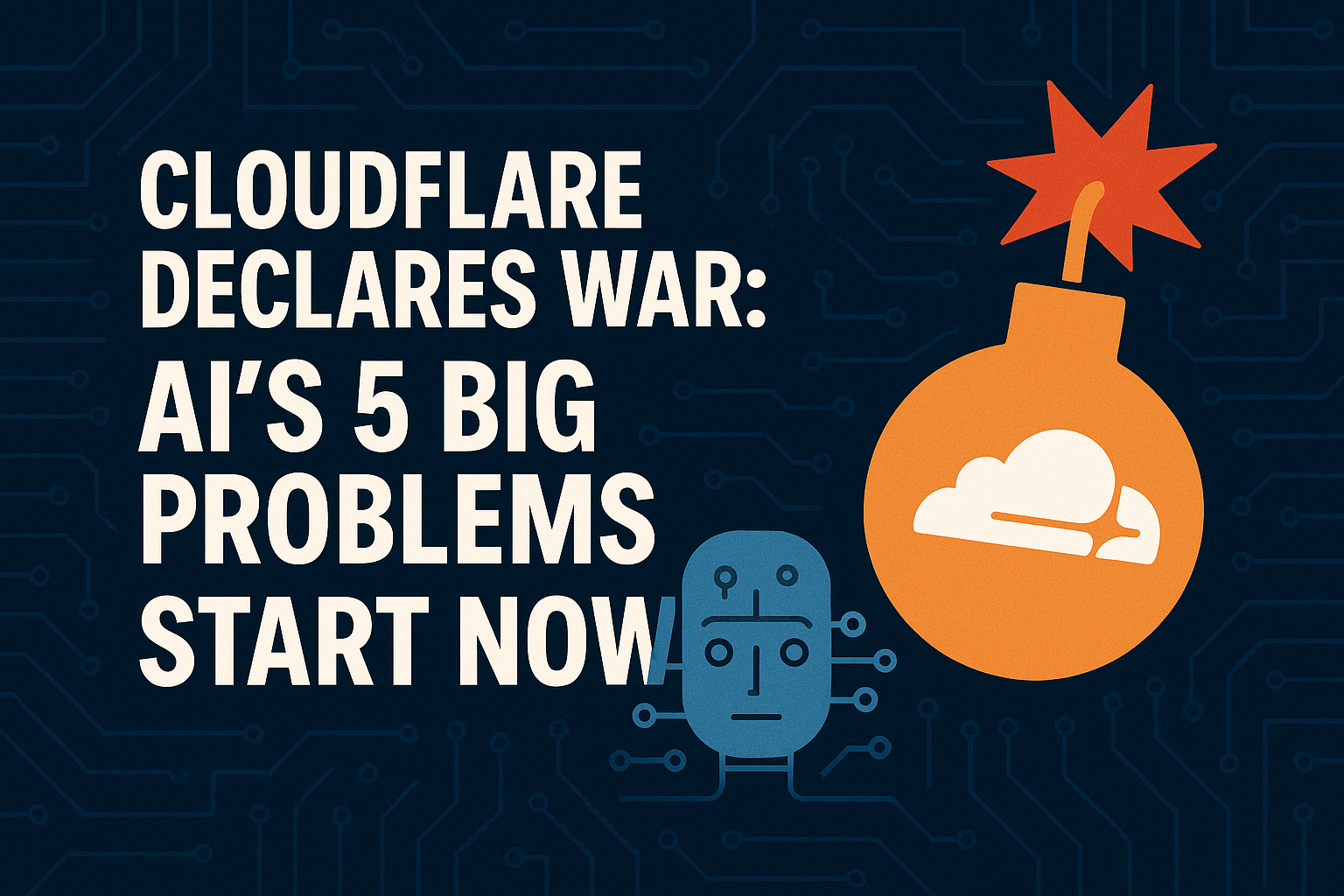Cloudflare just dropped a bombshell that’s rattling every AI lab from Silicon Valley to Shanghai. Last week, they rolled out a simple toggle letting any website owner block AI bots with one click. Overnight, the web’s traffic cop became a bouncer—and AI companies lost their all-access pass.
Why This Feels Like Betrayal to AI Builders
Imagine training an athlete while someone slowly removes gym equipment. That’s what Cloudflare’s move does to generative AI. Models like ChatGPT need constant data injections to stay relevant. By empowering publishers to block scrapers so easily (even anonymizing disguised bots!), Cloudflare shrinks the training pool. Suddenly, web scraping—the lifeblood of LLMs—faces extinction. No wonder AI executives woke up sweating.
Cloudflare’s Nuclear Option: How the Blocker Works
The beauty is in its brutality. Website admins now see this in their dashboards:
- A checkbox labeled “Block AI Scrapers”
- A fingerprinting system catching bots masking as browsers
- Real-time crawler blacklists updated hourly
One click activates enterprise-grade bot defense for every site on Cloudflare’s network—covering 20% of all websites. It’s like giving mom-and-pop shops missile systems against data harvesters.
The 5 Real Nightmares Unfolding for AI Companies
1. Training Data Starvation
Early tests show popular LLM crawlers getting blocked 47% more often where enabled. Models needing fresh data? Expect gaps in knowledge post-2024. Like an encyclopedia missing entire chapters.
2. Scraping Arms Race Spiral
AI firms now invest millions disguising crawlers, mimicking human clicks. But Cloudflare’s machine learning predicts this. Their reps whisper: “We’re training models to detect models.” Tick-tock.
3. Licensing Costs Exploding
When free data dries up, expect deals like Reddit’s $60M/year pact with Google. For small AI startups? That’s game over.
4. Legal Avalanche Acceleration
Publishers finally have leverage. Cloudflare CEO Matthew Prince practically dared The New York Times to block bots midway through their OpenAI lawsuit: “The tools are now in your hands.”
5. Synthetic Data’s Dirty Secret
Desperate teams might train models on AI-generated data. But experts know this causes model collapse—where systems forget reality. You can’t sustain innovation with digital incest.
The Ethical Dilemma No One’s Admitting
Cloudflare isn’t playing villain—they’re responding to publisher outcry. When Scripps News tested unblocked AI scrapers? Their servers got pounded by bot traffic 291% above normal. Prince told me: “We’re fixing power asymmetry.” Yet this pits two truths against each other:
- AI needs the open web to evolve
- Creators deserve sovereignty over their work
There’s no clean solution. But by choosing publishers, Cloudflare reshaped the battlefield.
What’s Next in the Bot Wars?
Watch for these chess moves:
- AI retaliation: Anthropic and OpenAI will create stealthier scrapers within weeks
- Domain licensing marketplaces: Think stock photos, but for website access
- Regulatory intervention: The FTC already eyes Cloudflare’s kingmaker role
The irony? Cloudflare uses tons of AI internally. But as one engineer confessed: “Our customers pay us to protect them—not enable free training data grabs.” Loyalty speaks louder than tech brotherhood.
The Unavoidable Collision Course
This isn’t just about toggle switches. It’s about whether AI grows through consensus or conquest. Cloudflare handed publishers a veto on the data economy—and the timing couldn’t sting more for AI firms already battling regulations and GPU shortages.Expect frantic deal-making as models get hungrier. Watch languages besides English decay first in multimodal models when non-English sites block bots. Most crucially: notice who blinks first when quality dips in ChatGPT-5.The web’s landscape just changed. AI companies stand on the wrong side of the firewall. And Cloudflare? They hold the keys.

